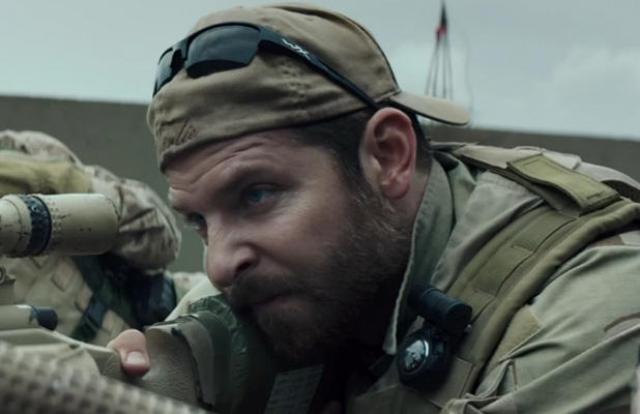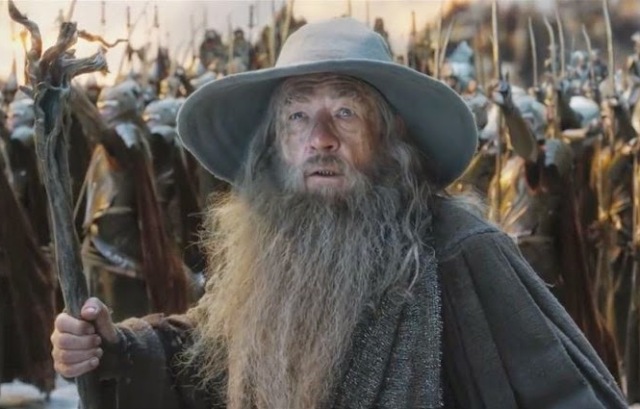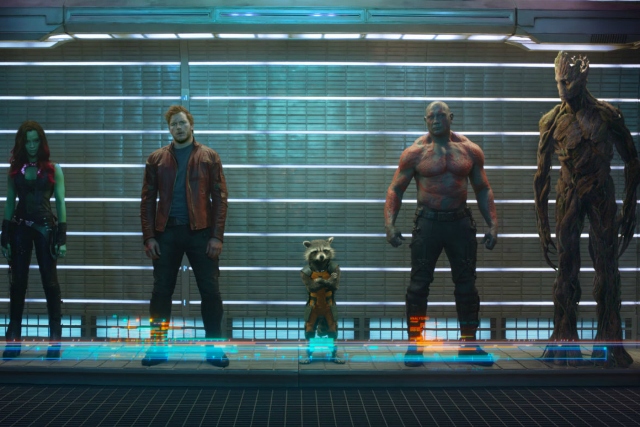The future is always unpredictable and most attempts to imagine it in a film usually come up short of matching reality. Take for instance the dystopian future of Blade Runner (1982) which imagined an overgrown, trash-filled Los Angeles in the far distant year of 2019. Four years out and Los Angeles, while still big and rough in parts, is not exactly a hell hole yet; and replicant beings like the ones in the movie are nowhere near a reality today. Why even the optimistic future of Back to the Future Part II (1988) is way off, since it takes place in our current year of 2015 and we still don’t have flying cars. Even still, pondering and imagining the future is something that has always appealed to filmmakers and it doesn’t stop many of them from making their best guesses. Filmmaker Walt Disney took an even better approach to imagining the future in his many projects, by not looking towards the things that will be but rather the things that could be in the future. As an avid futurist, Disney consulted with some of the greatest scientific and literary minds of the 20th century, such as Ray Bradbury and Werner von Braun, and used his expertise and clout as a filmmaker to help spread their ideas and inventions to the world in order for them to take hold in the public consciousness. His Disneyland television program in particular showcased programs in what he called the Tomorrowland segments that educated the world about science and invention, while at the same remaining entertaining. This would also eventually manifest itself into the Tomorrowland area found in Disney parks around the world. The overall effect has both kept optimism about the future alive while also creating a sustaining fanciful concept of what we ourselves can make the future into.
This is an idea that has undoubtedly inspired other filmmakers who have carried on and contributed to the long Disney legacy. One of those people is Brad Bird, a one-time animator at the Disney company who has since become an acclaimed writer/director in both animation and live action. Already, he has ammassed an impressive filmography with The Iron Giant (1999), The Incredibles (2004), Ratatouille (2007), and his successful leap to live action with Mission Impossible: Ghost Protocol (2011). After this successful stretch, Bird could have taken on any project he wanted, and thankfully he set out to deliver something new and original in the live action medium; something that’s been severely lacking in Hollywood in recent years. He returned to Disney with the idea born out of nostalgia for some of those old Tomorrowland episodes and his source of inspiration stemmed from something found deep in the Disney archives. That artifact has been dubbed the “1952” Box. Now, this is purely from the press released about the movie, which could have been fed from Disney’s marketing team, so whether or not this “1952” Box is real or not is uncertain. But, even if it is, it’s still an interesting discovery, as many of it’s contents present many fantastical dreams about the future, consistent with Walt’s concept of Tomorrowland. Some speculate that the box’s contents related to the projects that Walt Disney was working on for the 1964 New York World’s Fair, but Brad Bird saw a bit more of a story being told within that box. And that idea has now panned out into the new film Tomorrowland, which is quite a curiosity not just as a Disney film, but as a work of science fiction in general.
The story follows a young, scientifically minded teenager named Casey Newton (Britt Robertson) who is troubled by the loss of the space program in her hometown of Cape Canaveral, Florida. Her father (Tim McGraw), a former NASA engineer, tells her that this is the new reality of their lives and that it’s time to let it go, but she refuses give up on her dreams. After getting caught sneaking into the launching pad facility at Cape Canaveral, she is released from jail only to find that she has a new pin in her possession. When she touches it, it transports her into another realm; one that only she can see. This new realm turns out to be the titular Tomorrowland, which is a place where all of mankind’s greatest minds can coexist and have their dreams become a reality. Unfortunately for Casey, the open door closes on her just as quickly as it opened. In order to find out what Tomorrowland is and where she can find it, she goes in search of others who know about her pin. While on her way, she runs across some menacing characters who are hunting her down. They turn out to be robot soldiers, or Audio-Animatronics as they are referred to in the film. She’s saved from the robots by a mysterious young girl named Athena (Raffey Cassidy) who helps to steer her towards another like-minded soul who has information on the whereabouts of Tomorrowland. Soon, Casey finds Frank Walker (George Clooney) a former boy genius who has been to Tomorrowland and can help her get there. The only problem is, he’s been kicked out Tomorrowland before and is now unwelcome. But, with some motivation, the two make it and soon find that Tomorrowland is not what they hoped it was anymore and is under the rule of the pessimistic Governor Nix (Hugh Laurie).
There is a lot of interesting things that are going on in the movie and it has a message that is very much in line with the optimism of the future that the idea of Tomorrowland represents. Essentially, what Brad Bird wants to say with this movie is that the future is what we make of it, and he wants to steer us towards looking for ways to make the world a better place with both creativity and curiosity. One of the things that Bird laments in the film is how people are obsessing about the end of the world and the horrible things that are happening in the environment and political world without ever considering what they can do to change it. In particular, he highlights the fact that Hollywood’s view of the future has moved away from scientific ingenuity and invention and has instead presented a pessimistic apocalyptic view where either the world’s been destroyed by war, alien invasion or by zombie epidemics. The byproduct of this, Bird argues, is that fewer people are engaging in scientific curiosity anymore from the media, and that has led to a loss in scientific mindfulness and an increase in uneducated hysteria. This is certainly a very important message to get across, and one that I wish the movie had adhered to better. Unfortunately, Tomorrowland doesn’t fulfill the promise that it set out to create. There are great ideas here, but they are sadly undone by the very same conventions that it’s trying to criticize. It’s a very schizophrenic movie at times, because from scene to scene, it can’t decide whether it wants to be an inspirational movie, or an action movie. And that whiplash of tone often undermines the potential that it could have had.
I think this primarily is a problem with the script more than anything else. Brad Bird worked on this screenplay with Lost co-creator Damon Lindelof, who is one of the more problematic writers working in Hollywood today. Part of Lindelof’s problem is that he’s got the skills of a great writer, but with none of the restraint. Sometimes he’ll have many great ideas (too many in some cases) but he can’t always coalesce them into a compelling and ultimately fulfilling narrative. The most infuriating aspect of his writing is the way he keeps things vague and only teases his audience with the possibility that something extraordinary will happen, but ultimately never does. Anyone who saw the last season of Lost knows what I’m talking about, and sadly Tomorrowland is built around the same template as all of Lindelof’s other scripts. We are teased with all the wonders that we might see in the world of Tomorrowland, and the movie takes it’s time getting there, but once we finally arrive at Tomorrowland for real in the story, it’s a letdown because it doesn’t match what we dreamed it would be. Maybe that’s part of the point, but it flies in the face of what Brad Bird wants us to feel with this movie. What’s more, whenever the movie seems to find it’s footing, we are suddenly distracted by unnecessary cliches that derail the momentum in jarring ways. This movie has a lot of explosions and gun-play for a film that’s also criticizing the overuse of them in modern flicks. The villain, Governor Nix, also has a scene where he’s monologuing his whole sinister plan. Didn’t Brad Bird destroy that cliche effectively in The Incredibles?
It seems to me that Lindelof is only at his best when he’s reigned in, by either a studio or by J.J. Abrams (and even he began to lose control near the end of Star Trek Into Darkness). Unfortunately, Brad Bird doesn’t have that kind of control and he was probably too involved in the world building of this movie in order to address the flaws in the screenplay. But, even with all the problems inherent, it doesn’t turn the entire thing into a disaster. There are still a healthy amount of good things to like in this movie. The best thing that Brad Bird has learned from his years in animation is to tell a story with visuals, and that goes a long way to help smooth over some of the movie’s more troublesome shortcomings. The brief glimpses we get of Tomorrowland in all it’s glory are pretty spectacular. Bird even showcases the entire place in a beautiful 5 minute long tracking shot, and you already know how much I like those. He also manages to convey character traits without having to spell things out, either with costume ideas or clever clues from the character’s surroundings. And while there are tonal inconsistencies throughout the movie, the individual scenes are still well paced and entertaining. I especially liked the prologue which shows young Frank (Thomas Robinson) attending the 1964 World’s Fair in New York. Not only does Brad Bird beautifully recreate this real historical event in great detail, including a surprise found in the “It’s a Small World” ride, but it also perfectly sets up the wonder that is Tomorrowland. If only what followed had the same kind of wonder to it.
What does save most of the movie, however, is the cast itself. While the roles aren’t specifically crafted for anyone in particular, it does seem perfect to have the key role of Frank Walker played by a star like George Clooney. He perfectly captures the caricature of a once bright mind that’s been clouded by pessimism and he brings a lot of charm and depth to the character. While, it’s not his film per se (it’s more about the character of Casey overall), Clooney still adds weight and prestige to this movie that might have otherwise have been too lightweight for it’s own good. Britt Robertson, though a little too old to be playing a teenager, still carries the film well enough as Casey, and helps to make her likable, even despite the cliched “savior” role that she’s forced to play in this plot. The best performance and character in the movie, however, belongs to Raffey Cassidy’s Athena. Those mystical child characters you find in fanciful movies like this are sometimes hard to pull off and usually come off as insufferable. Athena, however, is by far the best thing about this movie, and Ms. Cassidy brings a surprising amount of charm out of this difficult character. I don’t want to give away too much, but there’s a lot of surprises revealed about Athena and she consistently improves the film in every scene she is in. Given all the problems with the story, having a character like her present is a godsend, and one wishes that her story had been better explored. The one weak point in the cast sadly would be Hugh Laurie as the villain. Laurie is a reliably talented actor, and his performance here isn’t at all bad. It’s just that Governor Nix is too much of a stock villain to be taken seriously. In fact, he’s not even overtly evil enough to make us care about what he does in the film’s disappointing climax. He’s just misguided, but with no real context to his character, so there’s no reason for us to fear him or understand him. Still, it’s more the script’s problem, and not the actor’s, and he tries his best with what he has to work with.
I have to say, as both a Disney fan and as someone who wants to see movies that can inspire great minds to achieve great things again, I was saddened by how disappointing this movie was. Believe me, I really wanted to love this movie; and I tried. Tomorrowland could have taken us into a brave new world of science fantasy, and sadly it never gets even close to reaching it’s potential. Maybe I expected too much, like seeing something that could end up being Stanley Kubrick meets Lewis Carroll, but Tomorrowland is far from Wonderland. The movie sadly ends up falling into the same cliches that the filmmakers are also lamenting in their film, which makes the whole thing a tad bit hypocritical. Part of the problem is with the uneven script, but the general problem with the movie is that it doesn’t seem to fully commit to anything either. Tomorrowland as a place is only teased at, and the ideas (as good as they may be) are half-cooked and never fully explained. Walt Disney used his Tomorrowland program to both educate as well as entertain. Tomorrowland can entertain, but the education falls flat, which is a shame because it’s a lesson that needs to be taught. But, as disappointed as I was, I can’t dismiss it either. It’s still a beautifully crafted movie with some very strong performances by it’s cast. Also, even though this may be Brad Bird’s least effective movie to date, there’s still a lot of creativity to behold. Look for some of the clever Easter eggs throughout, like the hidden A113 that always appears somewhere in Bird’s movies, and also the the hidden Space Mountain that appears in the wide shots of Tomorrowland. Though the movie is flawed, it’s also harmless too, and could be a fine source of entertainment for family audiences. It especially works as a source of nostalgia for Disney fans, given it’s exploration into the company’s history with the scientific advances and explorations of the last 50 years. I just wish that a more compelling story could have materialized out of all that dreaming.
Rating: 6.5/10









